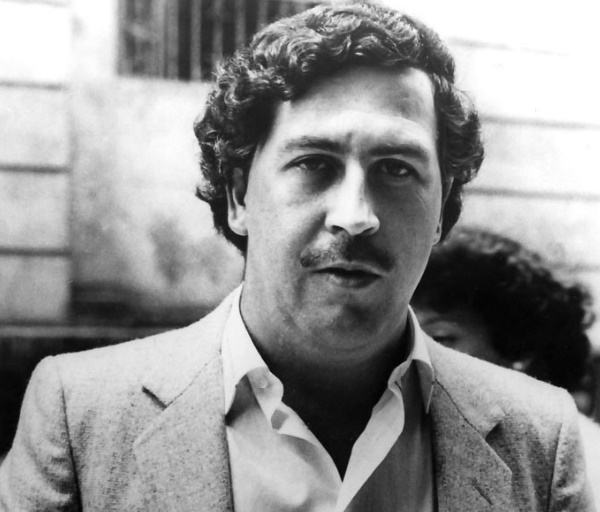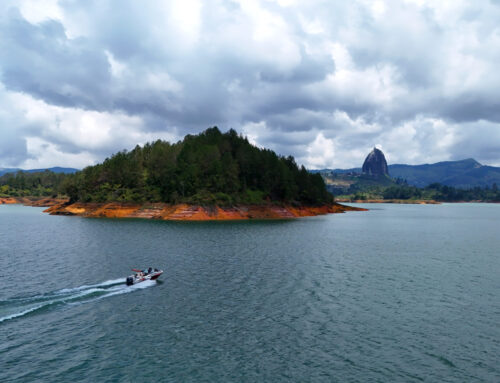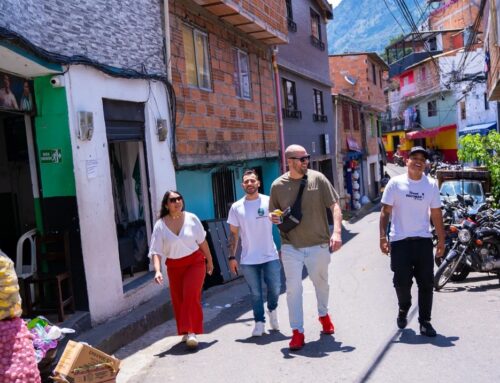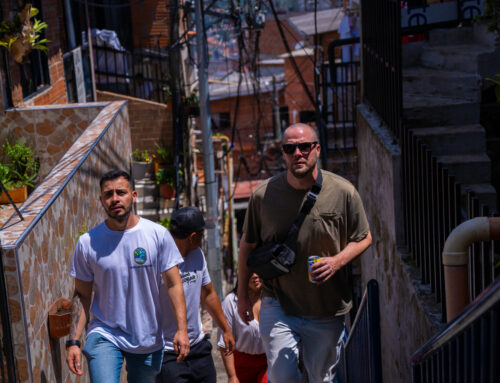
Medellín is known for many things, such as its urban transformation and top-notch medical industry. In terms of history, though, few things have been as influential on the city as the narco trade in the 70s, 80s, and 90s. The drug kingpin Pablo Escobar operated from this city for most of his career, together with other members who helped make the Medellín Cartel one of the most powerful drug organizations in the world. This has obviously left a mark on the memories of many, but not everyone thinks of Escobar as a villain – he left a surprisingly mixed legacy among Medellín residents.
Today, the former drug lord is mainly remembered in the city through Pablo Escobar tours. Tourists come from all over the world to see Escobar’s hideouts, prized possessions, and various memorabilia. These tours aren’t necessarily popular among locals, but it can’t be denied that they also play a part in the city’s booming tourism industry.
To understand Medellín’s present, it helps to take a look at its past. Here’s what you should know about Medellín’s history with narcos, and how it still influences the city today.
The origins of the Medellín cartel
The Medellín Cartel is practically synonymous with Pablo Escobar, but the reality is that there were quite a few major players in this organization. After all, the cartel was making about $100 million per day at its height, and it takes more than one man to stay on top of that type of operation.
At the beginning, though, nobody thought that the Medellín Cartel would ever make that kind of money. When Escobar was starting his drug-smuggling activities in the late 70s, the demand for psychoactive drugs was just taking off. As it happened, cocaine fit the bill perfectly, and Colombia was the ideal place to grow the coca plant from which the drug is made. Escobar would get his hands on unrefined coca paste, have his workers refine it, and smuggle it into the United States using drug mules.
Eventually, the cartel upgraded from drug mules to biplanes. Two of the cartel’s members, George Jung and Carlos Lehder, were experts in flight trafficking – they knew how to escape radar detection, and were familiar with routes that went from Colombia to South Florida.
Another key player was Gustavo de Jesus Gaviria Rivero, who quickly became Escobar’s right-hand man. He was responsible for developing and managing the cartel’s routes, both nationally and internationally. When various governments started cracking down on smugglers, it was Rivero who came up with alternative tactics to escape detection. Instead of switching routes, he realized that the cocaine could be hidden inside legal exports like appliances, fruits, and even the fabric of blue jeans. The drug was mixed with things like wine, cocoa powder, fruit pulp, and fabric, and sent to chemists in the US who would then extract it and pass it on to dealers.
The cartel’s operations continued for nearly 20 years. Even though various governments constantly escalated their efforts to capture Escobar and dismantle the Medellín Cartel, they remained one step ahead for years.
The violent legacy of the Medellín Cartel
As you’d expect with any area that was the center of a gigantic cartel, Medellín was the epicenter of all kinds of violence. Part of Escobar’s success was due to his refusal to let anyone stand in his way; if they couldn’t be corrupted or intimidated, they would often be killed. The cartel was responsible for thousands of deaths in Medellín and other parts of Colombia, from high-ranking government officials to ordinary citizens.
Experts estimate that the number is around 4,000 deaths caused by the Medellín cartel, which includes Colombia’s deadliest criminal attack. In an effort to assassinate Cesar Gaviria Trujillo, who was running for president in Colombia, Escobar ordered the bombing of Avianca Flight 203. The assassination was unsuccessful, but the explosion took the lives of 107 people.
Why some Medellín residents love Pablo Escobar
Strange as it might seem, there are people in certain parts of Medellín who speak well of Pablo Escobar. This is because he portrayed himself as a friend of the people, giving out cash to the poor, improving neighborhoods, and building a large number of houses for those in need. There’s even a neighborhood named after him, Barrio Pablo Escobar. The people who’ve benefitted from Escobar’s generosity don’t condone his violence, but they also think that his charitable deeds provide some kind of redemption for him. Even if he’s known by most people as one of history’s most infamous drug traffickers, they know him as the man who gave them a house.
Pablo Escobar tours: the impact of narcos in Medellín
There are all kinds of reasons why tourists visit different parts of the world, and it has to be admitted that the locals aren’t always enthusiastic about those reasons. This is the case in Medellín, where Pablo Escobar tours are popular among tourists. Most of the visitors just want to take in the highlights of the area, but some of them are legitimate fans of Escobar. Either way, they often revel in seeing where the drug lord operated and hid out, some of his more famous possessions, and even where he was killed by law enforcement in 1993.
For some Medellín residents, Pablo Escobar tours seem somewhat tasteless. Even so, many other locals benefit from the interest surrounding Medellín’s most famous criminal. Whether they operate as tour guides, manage tourist destinations, or sell memorabilia covered in pictures of Escobar’s face, they make a living from the life and death of Pablo Escobar. Even other types of Medellín tours, like museum tours or city tours, often include destinations related to the city’s history with narcos.
Processing the legacy of the Medellín Cartel
At the end of the day, there’s no doubt that Medellín is still dealing with the scars left by Pablo Escobar and his cartel. That being said, in typical Medellín fashion, that legacy is being turned around to hopefully benefit the city. Maybe not in the most sensitive way in some cases, but at least in a way that can profit locals in the tourism industry.




